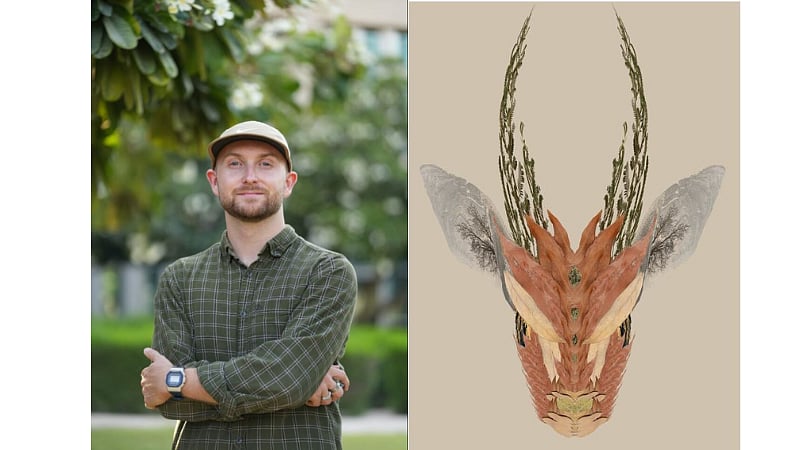Inside UAE desert wildlife: How one artist explores lives of rare gazelles, scorpions and more
Miles Critchley-Hope is a postgraduate student at Sorbonne University Abu Dhabi

The greatest secrets are always hidden in the most unlikely places. Those who don't believe in magic will never find it, as Roald Dahl had once said.
After speaking with the cheerful and jovial Miles Critchley-Hope, a postgraduate student at Sorbonne University Abu Dhabi, I felt that quote couldn’t be truer. Listening to him enthusiastically recount his hard work and adventures studying unique animals in the scorching UAE deserts—and seeing how that effort transformed into stunning exhibits—you can’t help but feel that some people truly discover what is magical to them.
From UK's Somerset to UAE
Miles shares his story with us. He isn’t new to wilderness; he grew up in quiet of UK’s Somerset. “It was just so green, overlooked by hills. And I spent a lot of time outdoors, and there was so much beauty,” he explains.
He was surrounded by love and respect for nature, and to not just treat animals, plants well, but to respect them with a gentle earnestness. This admiration carried him all the way to the UAE in 2024, where he moved to work as an environmental engineer and ecologist. It is also what shines through in his Symbiosis series, which showcases Abu Dhabi’s native wildlife through intricate photographic collages. From the mega dunes of Liwa to the mountains of Ras Al Khaimah, Miles studied animals that aren’t found anywhere else, capturing them in their natural habitats—comfortable, undisturbed, and fully themselves.
Learning and unlearning
It was a summer well-spent. I double-check with him, the names because I could hardly imagine them and he willingly obliges to share the names: Spiny tailed lizard, a collared kingfisher, Arabian Horned Viper, Arabian Gazelle, Gyr Falcon, Black fat tailed scorpion and Arabian oryx. He shares some facts too. “The lizard, or dhub can live for around 80 years and they live in areas where they can burrow through,” he says, talking about them with so much affection, that I almost feel endeared to something that normally would terrify the living daylights out of me. And, as he says, it can go a week without food and water.
Another one that he speaks about with much care, is the collared kingfisher, which is unwavered by harsh conditions, too. “It’s pretty darn cool,” he notes. And then Miles speaks about the scorpion with a chuckle. “That’s a wicked animal.”
The uniqueness of each species
Yet, each species has an extreme level of uniqueness as he says. They’re so breathtakingly different from each other; they cannot really be clumped under one name as just ‘animals’. They have their own character traits and personality, a truth that forms the beating heart of his photography.
Documenting all of this was no small feat. “It was really difficult to find the right names for the different species,” Miles explains. “There are over 300 words for each, and also in Arabic. Researching and identifying specific plants was a huge challenge.” His meticulous approach left no stone unturned. Then came the careful process of texturing, coloring, and layering for the exhibition. “Each piece has three prototypes,” he says.
The result was an exhibition displayed at the IUCN World Conservation Congress in Abu Dhabi. He credits Sorbonne Abu Dhabi for much of his success: "Studying sustainable engineering helped in two ways: first, in organizing and constructing a project, setting key milestones for myself, and ensuring progress in both the artwork and the organisational side; and second, on the environmental law side, it’s quite interesting studying law as an artist. Learning environmental law helps me understand its significance, the global movement, and the fact that I am part of that movement as well."
As Miles says, this artwork is to celebrate the land of the UAE, and the unique beings who live there, hopefully leading to better appreciation.
Truly, magic is real—and sometimes, it’s hiding in the deserts of the UAE.
Network Links
GN StoreDownload our app
© Al Nisr Publishing LLC 2025. All rights reserved.